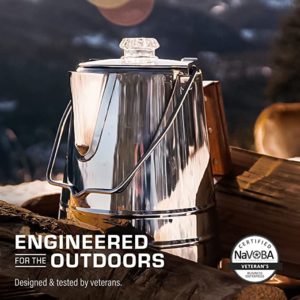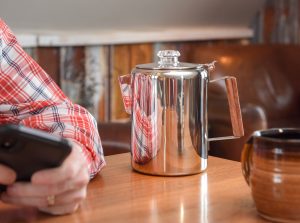6 Misconceptions About Percolated Coffee That We Need to Stop Buying Into
Home > Blog > Brewmaster Tips > Camping & Coffee > 6 Misconceptions About Percolated Coffee That We Need to Stop Buying Into
Everyone who has a percolator has probably heard these common criticisms about their favorite coffee maker. Well, we here at COLETTI would like to be the first to say, no more! The percolator might not be the “coolest” way to brew your coffee, but it’s far from an outdated or archaic system – and more people might agree if we left these six untrue notions about this brewing method behind us.
1. The Brew is Too Flavorful
One of the biggest issues people take with percolated coffee is that it’s too flavorful – which isn’t something you usually hear coffee lovers complain about! But, to be fair, we’ve definitely messed up a pot or two of percolator coffee by making it, well, strong enough to chew. Now, the nature of percolators is to make strong, flavorful coffee. If you prefer more watered-down coffee, this simply might not be the brewing system for you. But there are ways to enjoy that incredible flavor without that cringe-worthy burnt taste. The key to avoiding harsh percolator coffee is paying close attention to when the coffee is hot enough. For stovetop percolators, it’s crucial to notice when the first burble (this is fondly referred to as “perking”) hits the glass bubble of your machine; this indicates that your water is sufficiently hot enough to begin brewing coffee. You should aim to have no more than 1 “perc” every three to five seconds, so make sure to turn your heat down once the perking begins. For reference, the water in the pot should stay around 95 °C or 200 ℉, this way steam pressure can build up in the stem and bubble over gently. We did not go into this level of detail in our YouTube Instructional Video and probably should have included this point. Keep this going for four-seven minutes, or no more than one minute per cup of water. If you have an electric percolator, the big pitfall can be using the “Keep Warm” function. As helpful as this might seem, these warming options usually ruin the flavor of coffee across most machines.
2. Some Find the Brew Too Hot
A big myth about percolator coffee is that the brew always comes out too hot – hotter than your typical pot of drip-over coffee. This is because percolators often expose the grounds to higher temperatures than other methods, and may recirculate already brewed coffee through the beans. Sometimes, this can make percolated coffee susceptible to hotter-than-usual temperatures. However, one of the purposes of percolated coffee being so hot is to avoid under-extraction. When the water being used isn’t hot enough, it prevents the acids in the beans to dissolve, resulting in taste weak and sour flavor. According to the Specialty Coffee Association of America and the National Coffee Association, the optimal temperature for brewing a great cup of coffee is 197.6 – 204.8 ℉, which is usually right where percolated water lands. In all fairness, if the water temperature brewing your coffee is too high, then over extraction occurs and the coffee tastes bitter. There IS a risk of this happening with percolated coffee (because of that over-exposure), but don’t worry – there are also ways to avoid this mishap. Our favorite trick is boiling your water (or at least warming it up) before putting it in your percolator; this prevents the water from heating up too much, too quickly which can burn your mouth and even burn your coffee. And, hey, at the end of the day, we would take a nice hot cup of java that can gradually cool down over a lukewarm cup any day!
3. Percolated Coffee is Too Watered Down
Truthfully, this is likely the least true myth of all – percolated coffee is infamously strong, mostly because of the circular nature of the brewing process (giving the grounds more time to steep) and the hot temperature of the percolated water. If you’re getting weak, watered-down coffee from your percolator, it’s likely a misstep on your part. (Don’t worry, there’s always room to improve when it comes to making a perfect brew!) Make sure you’re using enough coffee grounds (one tablespoon for each cup of water is standard, and 40 cup percolators typically need up to 2 ½ cups of ground coffee) and that you’re opting for coarse grounds.
4. Drip Coffee is Just Better
This is obviously a matter of opinion. Drip coffee might be in vogue right now (whether it’s your traditional drip-over method, cold brew, or even Keurig pods), but that doesn’t mean it’s inherently better than percolated coffee. Much of the “bad rep” of the percolator is that it’s an archaic method of brewing coffee. We would argue that just because other methods have come along, it doesn’t make already existing systems irrelevant.  If there’s nothing wrong with enjoying “Three’s Company” reruns and listening to vinyl records, then there’s nothing wrong with brewing coffee the “old-fashioned way,” either.
If there’s nothing wrong with enjoying “Three’s Company” reruns and listening to vinyl records, then there’s nothing wrong with brewing coffee the “old-fashioned way,” either.
5. You Can’t Bring Coffee Camping
Maybe not with your drip coffee maker, but this couldn’t be less true when it comes to the percolator! Percolators are perfect for making coffee when you’re enjoying the great outdoors – in fact, this is what percolated coffee is best known for. When you’re a camping junkie but you can’t go a day (or less, if you’re anything like us) without your cup of joe, the percolator was designed to be your best friend. It’s easy to transport from site to site, and all you really need to brew percolator coffee is the machine itself, your coffee grounds (ideally coarsely ground, so they won’t slip through the holes in the metal basket), clean water, and a means to heat up your water, like a campfire. And if you have an electric percolator, it’s that much easier to brew coffee on-the-go! Besides the pot, water, and the grounds, this type of percolator doesn’t require outside heat to brew. All in all, it takes about seven minutes to make your percolator coffee while camping – about six minutes to brew and one minute to sit before enjoying – which leaves you with plenty of time to fish, hike, and enjoy your camping experience.
6. It Takes Too Long
True, it’s no secret that percolator coffee isn’t instantaneous, but what coffee is? (With the exception of instant coffee, which is in a category all its own.) We checked out the run times of a few different traditional brewing methods to see if percolators really do take an unreasonable amount of time, as some myths have perpetuated.
- French Press: About five minutes, between adding water, stirring the brew, and allowing the coffee to steep for the recommended four minutes. This doesn’t include the time it takes to grind your own coffee, if necessary.
- Automatic Drip Coffee Maker: 10 minutes for a full pot, which is approximately 12 cups of coffee.
- Keurig: 30 seconds, for your average Keurig “K-Cup.” However, different and more advanced Keurig models take up to three minutes to brew a single cup of coffee.
- Percolator: Seven minutes, which includes the six minutes for the coffee to “perk” and the one recommended minute to let the coffee sit. This doesn’t include the time it takes to grind your own coffee, if necessary. Some newer percolators can take as little as four minutes to brew, or one minute per cup of coffee.
As you can see, percolator coffee doesn’t take much longer than other brewing methods! And, arguably, perking provides a richer, more flavorful brew than some of these systems – some of which are infamously known for making weak, watery coffee.
How you choose to make your coffee is obviously a personal choice, which depends on different factors and preferences, but it’s important to try various brewing methods to find the one that’s right for you. We hope, despite whatever bad press you might have heard, that you’ll look past these popular misconceptions and try this classic coffee maker for yourself! Do you have any experience with percolators? Are you a fan of the coffee or is it not your favorite brewing method?






